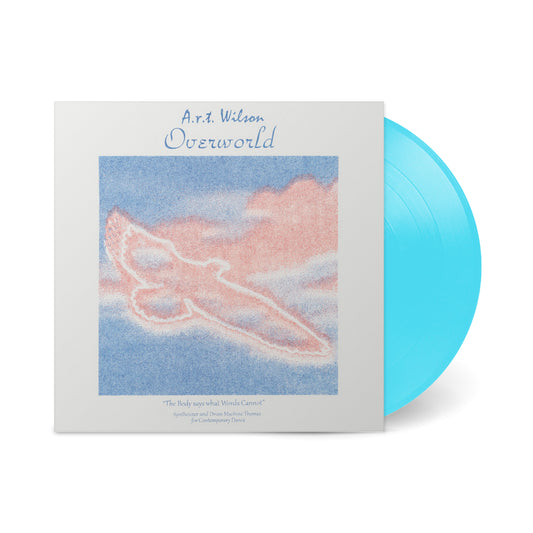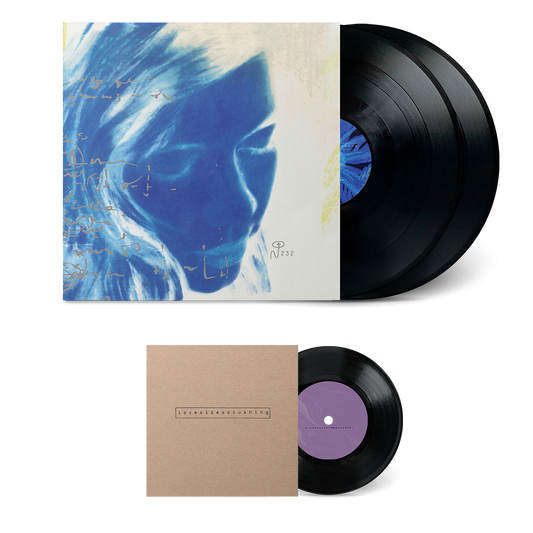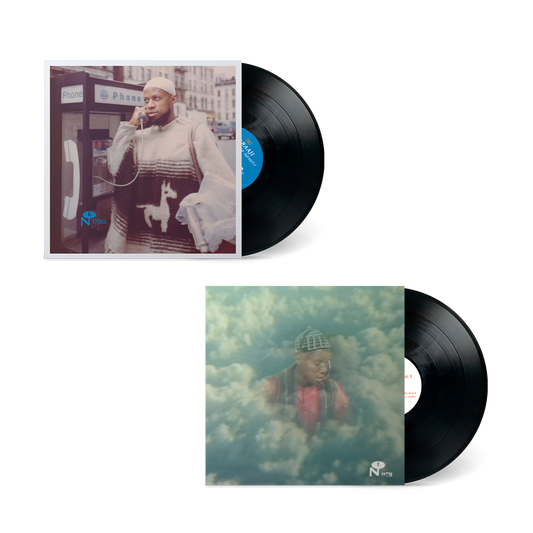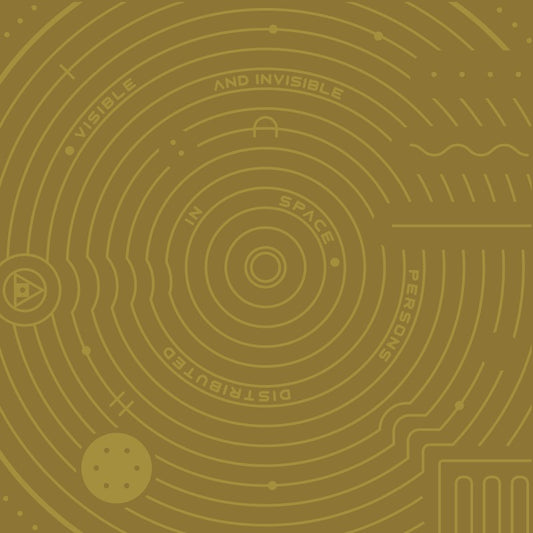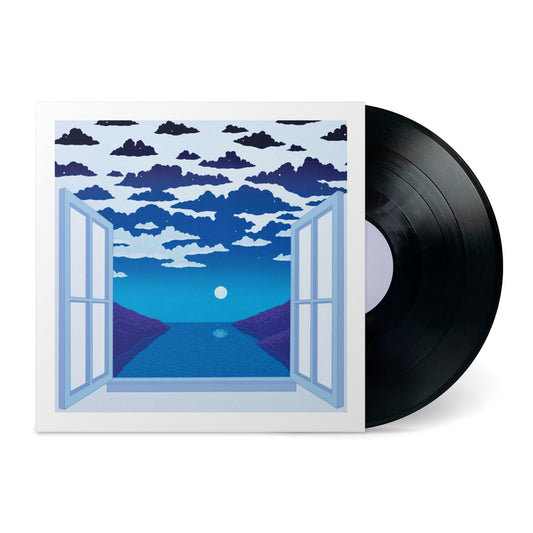It’s 2014 in Melbourne, Australia, and on the program of the Next Wave Festival is a piece described as “Neo-Paganism, Pop Divas, YouTube, Yoga and Death Metal side by side in a live performance that searches for transcendence in the most unlikely places.” It’s a contemporary dance performance with music by artist A.R.T. Wilson. Blending together the profane and sacred, the work explores how uninhibited access to ‘spiritual’ information affects not only the way we relate to it, but also the ways in which we value it. The piece, Overworld, was composed alongside modern dancers Rebecca Jensen (Water: sun sign Cancer), Sarah Aiken (Air: sun sign Aquarius), Rachel Coulson (Fire: sun sign Aries), and Janine Proost (Earth: sun sign Taurus).
This is Wilson’s first piece written for dance, though he’s put out a number of new age and dance records via Andras Fox, Wilson Tanner, and Berko. With Overworld, each dancer was assigned a character based on the elements and their star sign. Wilson spent time considering what these elements sound like, something he described as “an exercise of free association and play.” The piece came together quickly. Collaborating with dancers for Wilson gave his work a purpose beyond listening—a modern new age record that wasn’t an ironic endeavour. For the dancers, the music gave shape to the performance, providing timing and cues.
Overworld debuted in Autumn of 2014, and the soundtrack was issued in a limited run of cassettes, and later a similarly limited LP. The performance, available for viewing above, sits just outside every convention it draws from—almost too rhythmic for new age, nearly too multidisciplinary for dance, and practically too many modern references to be vintage. The cliché cosmic bird serves as a touchstone of the performance, the cassette’s album art, and also the butt of the joke.

Wilson’s self-described role in the making of Overworld was that of “bricoleur” rather than composer, utilizing his role as recordist and musician as contribution. His affection for new age music goes back to his collector and DJ roots, and has everything to do with the genre’s candor, “I loved the sincerity of the music, despite it being so often a projection of vanity and naivety,” Wilson said. “New age records and sounds were a sort of final frontier of collecting—daggy, overlaboured and definitely uncool.” In 2018, he made sound for the Overworld sequel, aptly titled Underworld, and is in the process of recording for a show based on cultural inertia and climate change titled WAISTD, an acronym for “What Am I Supposed To Do?”
New age records and sounds were a sort of final frontier of collecting - daggy, overlaboured and definitely uncool.
While now well established in the genre, after spending most of his career as a dance music producer and DJ, his shift into new age was a self-proclaimed cheeky endeavour. “telling people I was collecting and making new age music felt naughty,” he said. “Like a schoolboy bragging that he listens to heavy metal.” While for most of us it would be a stretch to think dance and new age music make sense side-by-side, in Wilson’s eyes, the two go hand in hand. “Sometimes the sounds are similar due to the hallmark synthesizers (DX7, Roland D50, Korg M1) but I think the cultural cliches were the defining force in both genres,” Wilson continued. “The soaring bird against an azure sky was to new age music what the urban red brick wall was to House. They were two genres that could hold the complexities of being both precariously personal and products of late capitalism without being devalued. They were both tricks we fell for as a culture. We couldn’t help tapping our feet to 4/4 rhythm of a kick drum, and we couldn’t help nodding off to the sound of a pan flute.”
The emphasis of drowsy pan flute melodies, and the role of new age music as a drugless sleep-inducing agent are trends Wilson describes as a more recent development in the genre. “New age in the ’80s was highly spatially motivated music. The artwork and album titles invoked rainforests, underwater words, mountains, rivers and the heavens above. I feel like many listeners used it as an escape from their lived environment... Now I see the predominant interest being in a kind of temporal control—modern releases conjure a sense of time more than place. Duration has become the main selling point—cassettes with a single composition on each side, Bandcamp releases that run past one hour, Youtube compilations that run for ten+ hours, or concerts that run for days. It’s less about travel externally, and more often about using music to maintain a kind of circadian rhythm or clock.”
Telling people I was collecting and making new age music felt naughty, like a schoolboy bragging that he listens to heavy metal.
While Overworld has certainly been utilized for its soporific qualities, the uses for the record were many—from home-births, to yoga, to sound therapy. Looking back seven years later, the cosmic bird has flown beyond anyone’s expectations. “I hear sincerity in its simplicity,” Wilson remarked. “I hope people can hear a single voice talking over a cacophony of influences, even if that voice might falter in places, or speak in borrowed tongues. Take from it what you want—whatever helps you sleep at night.”
-Izzy Fradin, August 2019

Read the full interview with A.R.T. Wilson below:
How did you meet Sarah and Rebecca, and how did the collaboration come to be?
Overworld was our first meeting, and the first time I’d written music for dance. The performance explores superficial access to ancient ritual and spiritual practice, appropriating neo-paganism, yoga, astrology, online gaming and online video content. Mixing the sacred and profane was a way of interrogating how uninhibited access to ’spiritual’ information affects not only the way we relate to it, but also how we value it. Each of the dancers had a character based on the elements and their star sign. I sat down and composed what water, fire, earth and air sound like, as an exercise of free association and play. The dancers responded well to the early demos and the soundtrack came together quickly. It was a great opportunity to make a new age record that wasn't just an ironic endeavor - it served a purpose greater than just listening - it helped shaped a performance and provide timing cues. Despite being a aetheist and a sceptic, I found the world of astrology to be a rich semiotic pool to draw from.

How would you describe the relationship between dance and New Age music? Why do they work so well together?
As a DJ and dance music producer, telling people I was collecting and making new age music felt naughty, like a schoolboy bragging that he listens to heavy metal. As genres, they both developed during an economic boom period where the tools of production were partially democratized and made accessible to home musicians and entrepreneurs. Music could be realised totally outside of the band-studio-label matrix which traditionally encircled music production. Releases by solo artists in both genres were sometimes privately funded and tended to sit on the slightly weirder end of the spectrum, containing deviations, gaps, silences and mistakes. Sometimes the sounds are similar due to the hallmark synthesizers (DX7, Roland D50, Korg M1) but I think the cultural cliches were the defining force in both genres. The soaring bird against an azure sky was to New Age music what the urban red brick wall was to House. They were two genres that could hold the complexities of being both precariously personal and products of late capitalism without being devalued. They were both tricks we fell for as a culture. We couldn’t help tapping our feet to 4/4 rhythm of a kick drum, and we couldn’t help nodding off to the sound of a pan flute.

Where did your fascination with New Age music come from, and how would you talk about the way you see it changing in modern times?
I’d taken an interest in New Age music years prior, initially through record collecting and hosting a radio show on 3RRR FM here in Melbourne. I’d also found music from the archival work of Douglas Mcgowan and Anthony Pearson, both of whom helped shape what I was listening to at the time. I loved the sincerity of the music, despite it being so often a projection of vanity and naivety. Reflecting back on it, there’s been a huge surge of interest in ambient and new age music - but around 2010 it truly seemed that New Age records and sounds were a sort of final frontier of collecting - daggy, overlaboured and definitely uncool.
New Age in the 80s was highly spatially motivated music. The artwork and album titles invoked rainforests, underwater words, mountains, rivers and the heavens above. I feel like many listeners used it as an escape from their lived environment - explaining the fascination with records of thunderstorms, rain, animals in nature and the pastroral mentality more generally. Now I see the predominant interest being in a kind of temporal control - modern releases conjure a sense of time more than place. Duration has become the main selling point - cassettes with a single composition on each side, Bandcamp releases that run past 1hour, youtube compilations that run for 10+ hours or concerts that run for days. It’s less about travel externally, and more often about using music to maintain a kind of circadian rhythm or clock. Of patience as an affront to the slew of our increasingly shorter attention spans culturally.
Who are some of your favorite composers, favorite dancers?
When you write ‘composer’ I mentally evaporate most of my music collection. A few kernels remain: J.S. Bach, Satie, Arvo Part and Charles Ives. Modern and electronic: Lieven Martens Moana, Rik Rue, Janek Schaefer and Simon Fisher Turner. I’ve been recording from a synth library called MESS in Melbourne, which has brought me into proximity with Byron Sculling and Robin Fox, both of whom have been making incredible work for contemporary dance for decades. But most of the work I do isn’t composition - I tend to rely on my skills as a musician and recordist. If I was to describe my role with regards to Overworld, perhaps the most appropriate term would be handyman or bricoleur.
I’ve continued working with Bec and Sarah developing new work - I made sound for a Overworld sequel called Underworld (2018) and am currently recording sound for a show based around cultural inertia and climate change called WAISTD which will premiere later this year at ArtsHouse, Melbourne.

What do you hope people take from Overworld? Is it a feeling? A narrative? An intention?
Reflecting back on it after seven years, the bird has definitely flown into parts unknown. It’s humbling that a work of symbolic play for dance theatre has been put to so many uses: people have shared stories of home-births, catwalks, yoga instructionals and sound therapy. For me personally, listening back, I hear sincerity in its simplicity. The recording is basically in mono (both in technical and psychological terms). I hope people can hear a single voice talking over a cacophony of influences, even if that voice might falter in places, or speak in borrowed tongues. Take from it what you want - whatever helps you sleep at night.














